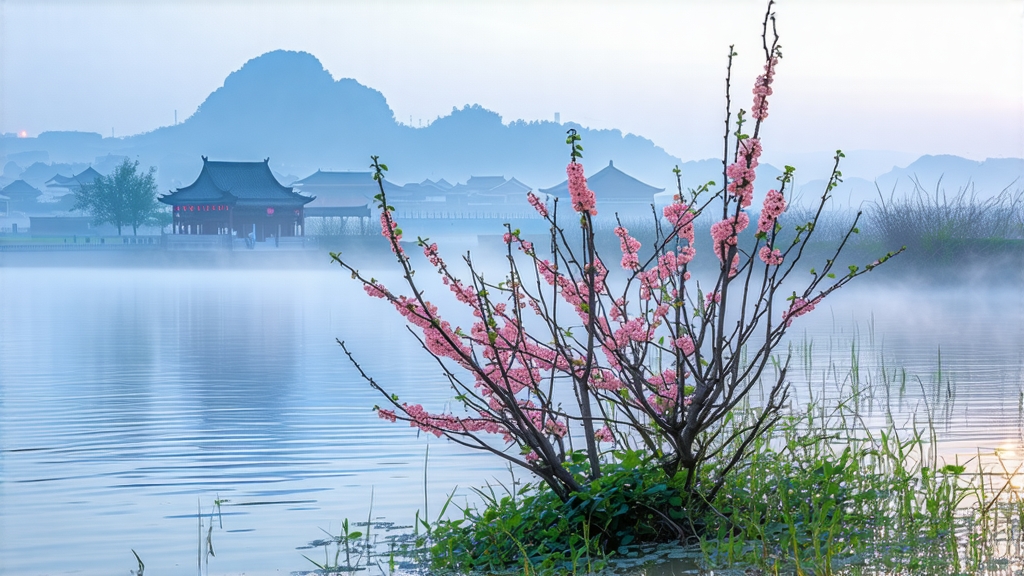
Biluochun, whose name translates literally to “Green Snail Spring,” is one of China’s ten most celebrated teas, yet it remains a quiet jewel outside the circles of devoted tea lovers. Grown on the mist-locked, fruit-tree-dotted hills that rise from the eastern shore of Lake Tai near Suzhou, this green tea seduces with a fragrance so naturally floral that first-time drinkers often swear a secret blend of petals has been added. Nothing could be further from the truth: the aroma is the leaf’s own, coaxed into brilliance by one of the most labor-intensive crafting methods in the entire tea world. To understand Biluochun is to step into a 1,200-year-old story of monks, emperors, lake mists, and the microscopic perfection of a single downy bud.
Historical whispers
Local chronicles credit a Buddhist nun named Lingzhen for spotting the tea in the Tang dynasty. She noticed that the wild shrubs growing between peach and apricot trees bore tiny leaves imbued with an unusually sweet scent. Monks began picking and roasting them for temple guests; the fame of “Xia Sha Ren Xiang” (literally “Scary-fragrant”) spread to the Qing court. The Kangxi Emperor, touring the region in 1699, found the name vulgar and rechristened it Biluochun for its spiral shape and spring harvest. From that moment the tea became a tribute item, carried by canal boat to Beijing within days of plucking so that the emperor could taste the lake’s morning mist in his golden bowl.
Micro-terroir of Lake Tai
Lake Taihu acts as a giant heat reservoir, releasing night warmth that meets cool dawn air to form a silver fog. The fog filters sunlight into a soft, diffused glow, slowing photosynthesis and prompting the plant to stockpile amino acids—especially L-theanine—while keeping tannins low. The result is a tea that is brothy yet mellow, sweet yet brisk. Around the lake, low hills of weathered granite force roots to struggle, concentrating flavor, while alternating groves of loquat, plum, and bayberry perfume the air. Tea bushes absorb these airborne esters, which later re-emerge in the cup as notes of nectarine and lilac. No other green tea in China is as thoroughly shaped by fruit-tree aromatics; Biluochun is literally “scented” by its neighbors.
Varietal identity
All Biluochun comes from a narrow 10 km by 5 km belt in Dongting East and West Mountains, an area now protected by a geographical indication (GI) seal. Within this zone, two clonal selections dominate: “Dongting Small-leaf” and “Fruit-tree Aroma.” The former offers tighter spirals and higher umami; the latter carries more pronounced top notes of apricot blossom. Outside the GI zone, similar-looking teas appear—often labeled “Suzhou Green Spiral”—but they lack the lake-born sweetness and the tiny white down that clings to authentic buds like frost on spring grass.
Plucking code
The harvest window is cruelly short: only twenty days between the Qingming festival and Grain Rain. Pickers rise at 4 a.m. to be on the mountainside by dawn, when leaves are still cold and taut with overnight moisture. The standard is one unopened bud plus the adjacent leaf, no longer than 2.5 cm, and weighing no more than 0.2 g. Experienced pluckers work with a “three twirls and one snap” motion that detaches the shoot without bruising the stem; any brown edge oxidizes later and ruins the jade color. A full day’s picking yields barely 500 g of fresh leaf, which shrinks to 100 g after firing—enough for only twenty cups.
The six-hour transformation
Within minutes of plucking, leaf baskets are carried to the village workshop where three sequential crafts—kill-green, spiral-rolling, and final drying—unfold without pause.
-
Kill-green (shaqing): Leaves are tossed by hand onto an iron pan heated to 180 °C. The master’s palm tests the surface in a quick, almost reckless slap; if the hiss is too sharp, the pan is cooled with a damp cloth. For four minutes the leaves are flipped, pressed, and fluffed to destroy enzymes while locking in chlorophyll’s vivid green.
-
Spiral-rolling (cuoqing): Heat drops to 70 °C. Now comes Biluochun’s signature move: the maker gathers a palmful of hot leaf and rubs it against the pan in a clockwise spiral, using